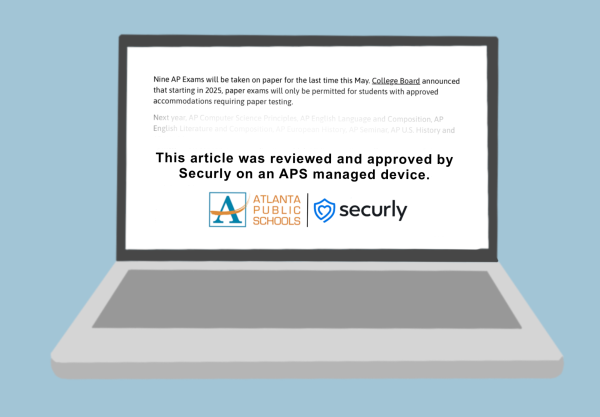Gentrification erases the past, changes the future
June 1, 2017
By Anya Lomsadze
Towering condos, Subarus, groomed dogs. They replaced a place I called home for eight years of my life in less than a year of construction.
I used to live in apartments on the outskirts of Buckhead. They were a little odd for the area — the residents were mostly Latino, unlike the relatively homogenous community around the area. The buildings were a little shoddy, and I had drawn murals all over the walls with crayon.
However, home is home, and when I saw the steel giants that had replaced the bricks of my childhood, it was a shock. “Gentrification,” a buzzword used with both negative and positive connotations, became a reality.
My family, along with many others, in some way hit the jackpot with those apartments. They weren’t great, but they were affordable. Most importantly, they were in a very good school district. The area belonged to the North Atlanta High School cluster, and I got to go to Morris Brandon Elementary School, a very good public school by any standard.
Now however, a family seeking to live in that area would need to pay around $300,000 to get the cheapest condo, in addition to high loan interest rates, high property taxes and other utility expenses. My family would by no means be able to live there today, and thus my siblings and I would not be able to go to the great schools in that area.
That’s what happens when cities develop and the population increases. Atlanta is becoming a new city. It’s a little hard to notice since redevelopment has not been concentrated in one area, but Atlanta has a new, and still changing, landscape.
According to the Atlanta Regional Commission, Atlanta added 7,900 new residents between 2015 and 2016, the largest single-year estimated population increase since the Great Recession of 2008. The predictions show that growth will not subside — by 2040, the metro Atlanta region is expected to add 8 million people. Atlanta will have to continually adopt and change communities to fit the continual influx of new residents.
We’ve noticed this in Atlanta Public Schools for a while now. It’s no secret that the Grady Cluster is overcrowded, which is why the district is planning on investing millions to add new classroom space, including moving the location of the cluster’s middle school.
The city is knocking down and rebuilding areas like Midtown, our school district and my old neighborhood. I expect these changes will seem tame compared to what is to come in the next few decades as Atlanta lives up to the name of “Capital of the South.”
After seeing my apartments knocked down, I’ve gained a new appreciation for my new home in Midtown. A little surprisingly for me, I’ve begun to appreciate Grady more, despite the bathroom doors that don’t lock and the air conditioner that never seems to work.
When we graduate and go off to college, to work or wherever else we may go, Atlanta is going to change. Grady will not be remotely the same. It won’t be like in the movies — we won’t visit home and find it preserved like a museum exhibit.
Although most of us are earnest to leave — the effects of the senioritis infection can be seen in adolescents as young as freshmen — take a moment to internalize the life around you.
Things may be quite different much sooner than expected. With that, remember that these changes may not only erase the settings of childhood memories but also opportunities for families who will not be able to afford the city.











